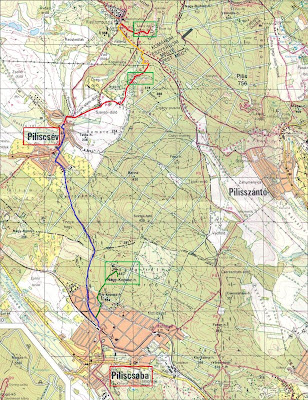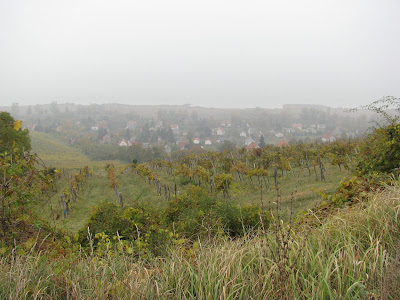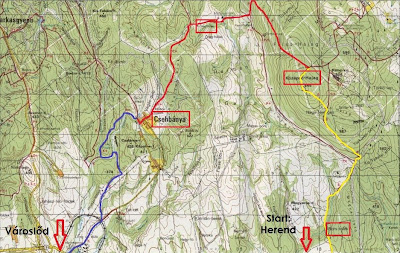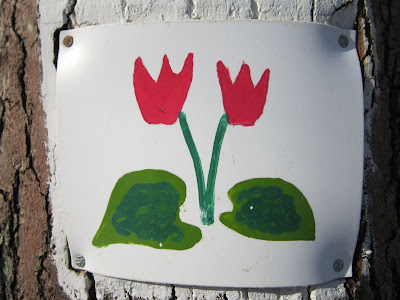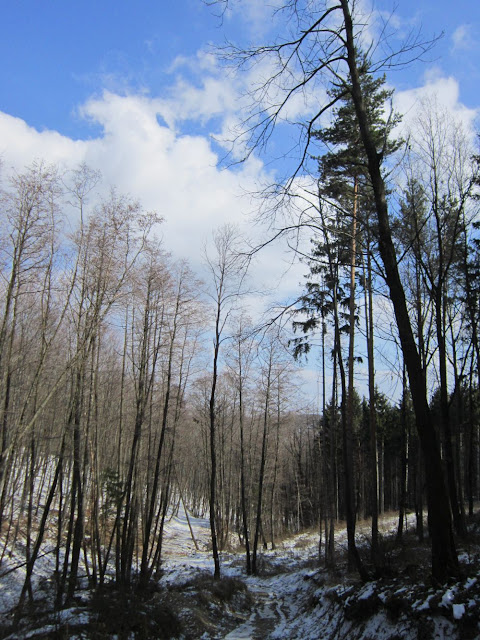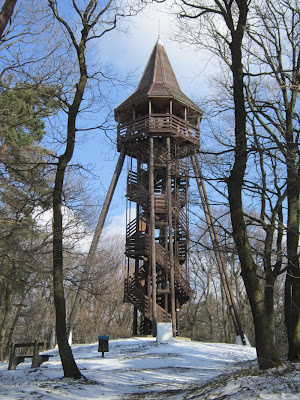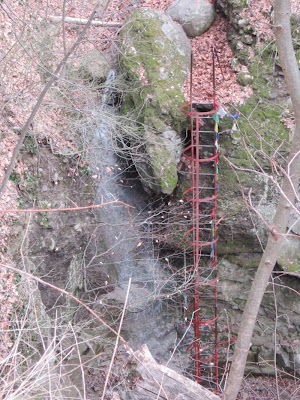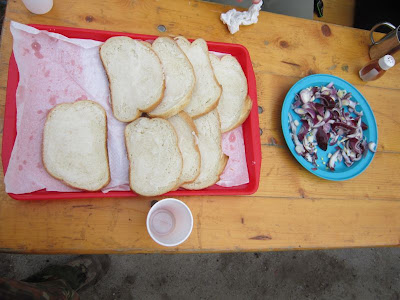After more than 2 months of silence I’m
back again, therefore you can read a brand new post on http://hikinginhungary.blogspot.hu/.
I have skipped writing for several reasons –sorry for that– but I start it
again now. The summer holiday was long,
but not long enough to let me do everything I wanted to do. Although, I am very
enthusiastic about hiking, I had to have a break lately, which is finally over!
Let me tell you more about the adventures I had yesterday.
| Jézus Szíve Church (1892) |
When I was a little schoolboy, I was taken to an excursion with my peers to
Kőszeg Mountains. This is a mountainous region in West Hungary, near the
Austrian border. It is famous for its highest point Írott-kő (883m, Ger: Geschriebenstein) [literally means written stone in Hungarian]
where a stone built lookout tower is located. From this point, which is the
highest of the Transdanubian region, even Lake Balaton is visible if the
weather is clear.
| Óház-tető, a lookout tower built on the ruins of a medieval fortification (1248) |
I had free time and motivation on
Saturday, so I travelled from Sopron to Kőszeg by train to start this little
adventure. (Trains go to Kőszeg from Szombathely hourly – click here for the actual
schedule)! I couldn’t recall too much of my elementary school memories so I
decided to look for a new trail up to Írott-kő.
This area is full of marked hiking trails and the place I wanted to visit is
the western starting point of Országos Kéktúra (National Blue Trail). All in
all, it is absolutely ideal for shorter or longer hikes as well. I planned to
go this way, following the sign.
sign.
 sign.
sign.
(Distances from the start are marked
in brackets).
Kőszeg railway station — Kálvária (3.3km)
— Hét-forrás (6.7km) — Óház tető (7.8km) — Vörös kereszt
(9.1km) — Stájerházak (11.8km) — Hörmann-forrás (13.7km) —
Írott-kő (16km)
When I arrived in the town, I was excited and worrying about the weather. Unfortunately, it was raining through my journey to Kőszeg and it stopped only for some minutes while I was hiking. Therefore, I went only until Vörös kereszt, where I stopped and turned back. Bad luck, isn’t it? However, this trail it probably the best way up to Írott-kő, showing you the best of the region.
| It is called Red Cross, because there is a road leading to Rőtfalva [rőt means red] from here. |
Start the hike from the railway station and walk into downtown. Visit Kőszeg two times if you can: one for sightseeing (there are beautiful churches and streets, what’s more there is a castle there) and another for hiking. You can start following the blue sign from Jurisics Square. First you will arrive at the Calvary (375m) where you can stop for taking some photos of the landscape.
After another ~3 kilometres of walk you will reach Hét-forrás (424m, seven springs) which is a beautiful place known since the 14th century, visited by many hikers from year to year.
| Hétforrás is named after the seven conqueror leaders of the ancient Hungarian tribes: Álmos, Előd, Ond, Kond, Tas, Huba, Töhötöm |
After refreshing yourself with cold, clear spring-water, you can continue your hike to Óház-tető (607m) where a lookout tower, similar to the one on Írott-kő, is located. Climbing up to this point is rather difficult, so you will probably have some rest after arriving. Look for the simple blue sign here also, because this is a conjunction of several routes (the green one and the blue cross also leads to here) and you can easily pick the wrong one. Walk forth until you reach Vörös kereszt (Red Cross). I stopped here because it started to rain heavily and I was 10 kilometres away from Kőszeg, not having completely waterproof equipment. (I have a post about proper gear, click here to read that)!


